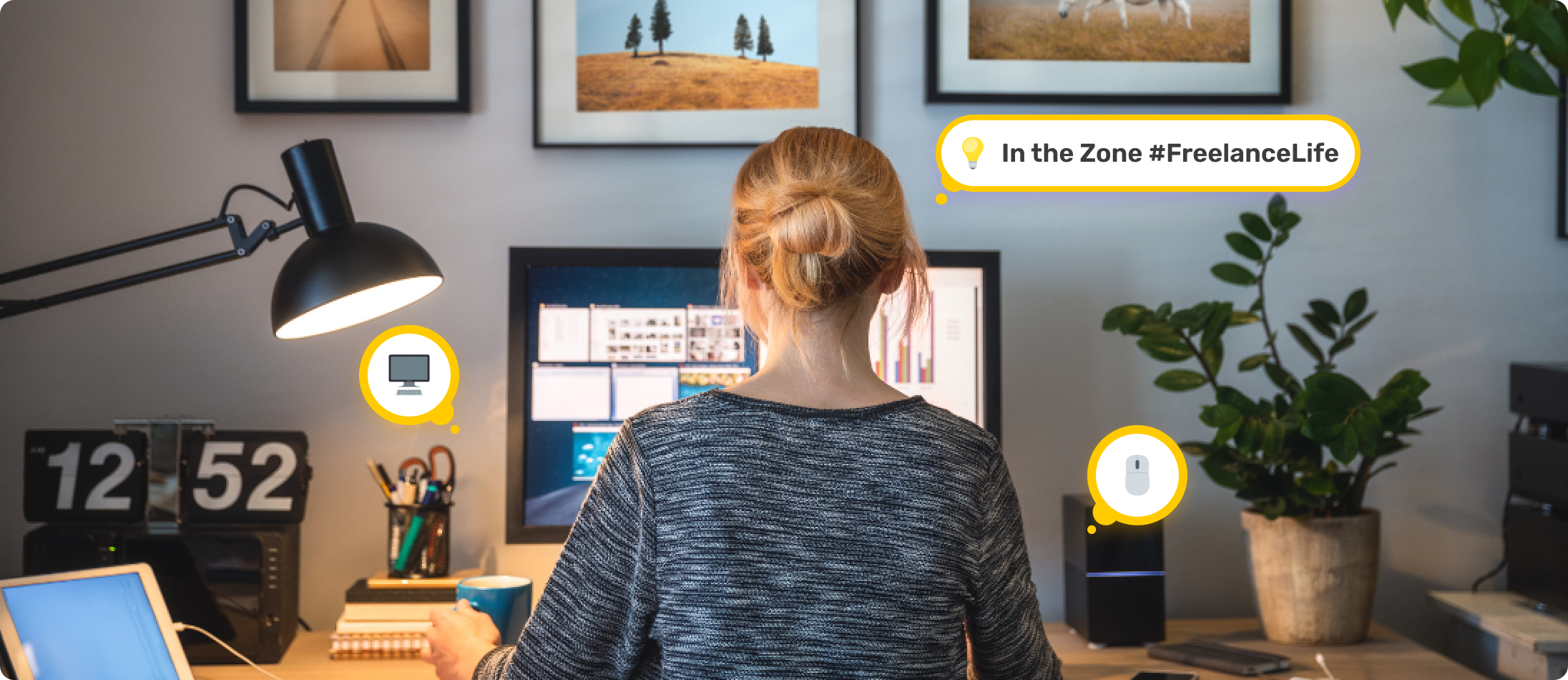Freelancing Tips: How to Stay Sane, Productive, and Paid
September 16, 2025 . 3 min read . Author: Shelley Ngugi

So, you have ditched the cubicle for the corner of your couch or maybe a café where the Wi-Fi is as strong as the coffee. Fancy, I know. But in due time, you get the fine print and quickly realise being a freelancer is like running your own one-person band. You’re the CEO, marketer, accountant, client wrangler, and coffee fetcher. Glamorous? Sometimes. Freeing? Often. Overwhelming? Pretty much every time someone asks for “just one more revision.” If you’re just getting started or refining your flow, these freelancing tips will help you avoid chaos and build a thriving, balanced career.
The Do’s: Freelancing Tips That Set You Up to Win
Create a Good Work Setup
First and probably most important of all freelancing tips? Your space should energise you, not drain you. While this could mean complete silence for some, it could also mean a subtle background buzz in a coffee shop for others. Regardless, your setup should match how you work best to boost your productivity. Some things that help:
- A comfortable chair and ergonomic desk setup — it’s how you avoid back pain and expensive chiropractor visits.
- Reliable internet — dropped calls and failed uploads don’t just kill momentum, they can cost you work.
- Noise-cancelling headphones for focus.
- Natural light, whenever possible, boosts your mood and focus.
- A defined “work zone” helps train your brain to switch into work mode.
Build a Digital Toolbelt
Freelancing is 50% doing the work and 50% staying organised. Let me paint a scenario: you’ve just finished designing a logo and sent it off feeling good—until your client replies, “Can you make sure it follows the brand guidelines that I shared?” You’re caught off guard, and you have no memory of seeing them. Panic sets in. Not just because you’ll need to revise the design, but because you’ve now lost the hour you’d set aside for another urgent project that’s due the same day.
That’s where digital tools come in. Organisation isn’t just helpful—it’s what keeps your freelance business running, and your brain from going into a meltdown. Here’s how to make your digital life smoother:
- Track your time: Use time tracking tools to log hours and understand where your energy is going.
- Get paid: Use invoicing tools to keep payments simple and transparent.
- Stay on top of projects: You don’t need a full project management system, but you do need a structure to avoid last-minute chaos.
- Store your stuff: Back up files, label folders clearly, and avoid the dreaded “final_final2_REVISED” mess.
- Create with ease: Use tools that streamline your creative process and client feedback loops.
You may also want to check out YouMap’s blog on How to Use Mapping Software for Your Business, because not everything about freelancing lives in a spreadsheet or inbox. Sometimes, seeing things laid out visually makes all the difference.
Define Your Boundaries (and Stick to Them)
When you’re working from home or hopping between gigs, one of the trickiest things is clocking out. It’s tempting to always be “on”, which builds constant low-grade stress. Before you know it, you’re exhausted, less creative, and starting to resent the very freedom that drew you to freelancing in the first place. Here’s how to draw the line:
- Set clear working hours and defend them like a dragon treasure.
- Add your schedule to your email signature or auto-reply.
- Don’t be afraid to say “no” to last-minute late-night requests unless it’s crisis-level and paid accordingly.
Create Your Client Vetting System
It is tempting to take up everything that comes your way, but not every client is your client. Here’s what to look for:
Some Red Flags:
- Vague project scope
- “Exposure” as compensation
- Payment delays
- Endless pre-contract calls
And the Green Flags:
- Clear communication about goals and timelines
- Respect for your process and time
- Contract-ready from day one
- They pay your rate without negotiation battles
Keep Learning
Freelancing isn’t static. New tools, trends, and tactics pop up constantly. Here is how you can stay on top of things:
- Join communities like Reddit’s r/freelance or follow freelancers on LinkedIn
- Bookmark useful blogs like The Freelancer’s Year or Indie Hackers
A skill today could be a service you sell tomorrow.
The Don’ts: Things to Avoid if You Want to Stay Sane
- Don’t Say Yes to Everything: Overloading leads to burnout and underperformance.
- Don’t Undervalue Yourself: If your rate feels too low, it probably is. Explore value-based pricing.
- Don’t Neglect Contracts: Even for friends or family projects, get it in writing.
- Don’t Work in Isolation: Find your people, whether online or in-person.
Join a coworking space or check out local freelancer-friendly cafes, which you can easily find through YouMap’s Digital Nomad Workspots Map.
What Hours Should You Work?
Whatever suits your brain. Early riser? Power through the morning. Night owl? Burn that midnight oil. Just be consistent so your clients know when you’re online and your brain knows when to rest.
Where Do You Find Clients?
- Cold pitching
- Referrals
- Platforms like Upwork, Contra, or Fiverr
- Your own network (start with LinkedIn)
- Niche communities like Discord or Women Who Design
One Last Tip: Map Your Freelance Journey
Freelancing is part freedom, part chaos. Why not bring order to it with YouMap?
- Pin your favourite work spots, cafes, and libraries
- Drop client meeting locations or coworking spaces
- Browse maps like the Digital Nomad Workspots Map made by other freelancers like you
- Or better yet, build a freelance community hub right on YouMap
Explore even more great places to work, connect, and create on the Digital Nomad Workspots Map. It’s built by freelancers, for freelancers.


